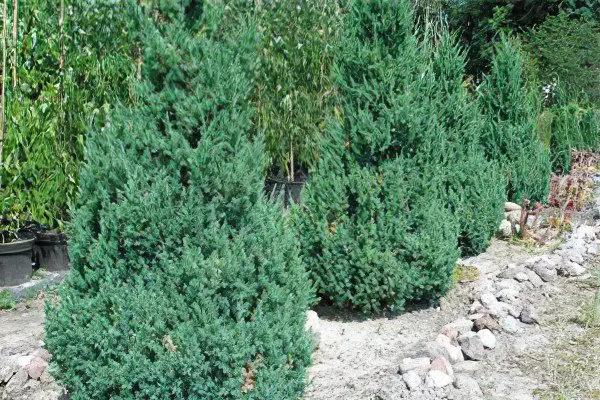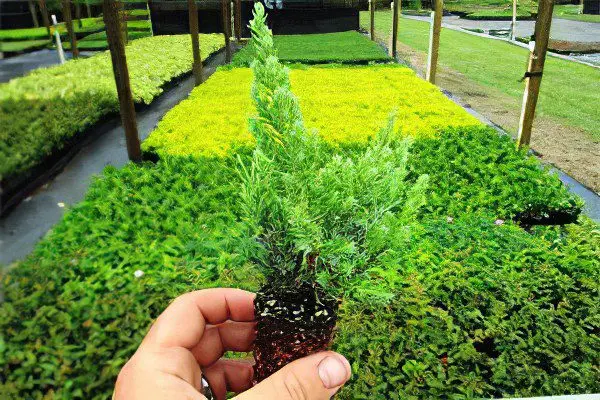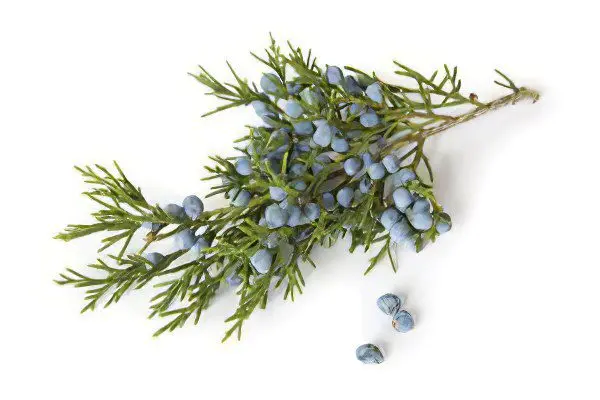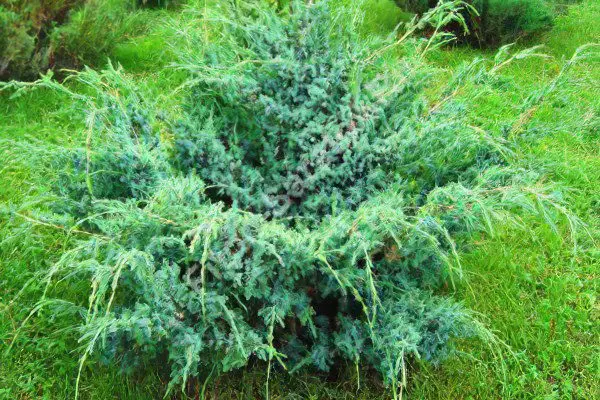Contents

Chinese juniper is a plant from the genus Juniper, belonging to the Cypress family. The shrub is found in Northeastern China, in Korea and in southern Manchuria.
Juniper Chinese can be represented by both a shrub and a tree. In nature, both monoecious and dioecious plants grow. The maximum height of the tree is 25 m. The crown of the plant is cone-shaped, it can be narrow and wide. The color of the branches is dark green, the needles are needle-shaped and scaly.
Cones have a variety of shapes, they can be elongated, angular and spherical. At the initial stage of ripening, they are covered with a white coating, which later disappears, and the cones become brown or dark blue. In one cone, 2 or 3 seeds are most often located, less often their number reaches 5. The seeds begin to ripen in the second year of the juniper’s life.
The color of the needles depends on the variety of the plant. It can be yellow, green, bluish-green and even white-and-white.
There is a plant in the parks of the Crimea and the Caucasus, where it feels quite good and actively bears fruit. Juniper is almost universally distributed in Japan and China.
At the initial stages of development, Chinese juniper grows very slowly, in the future its growth accelerates. Shrubs tolerate well and retain their viability even after harsh winters with an air temperature of -30 ° C. The frost resistance of the plant increases as it matures. The plant is not picky about watering and is able to exist without problems in dry steppe regions. However, Chinese juniper feels best in deep, fresh soil with sufficient air humidity. Chinese juniper is able to live and develop in urban environments, as it is indifferent to high air pollution.
The tree is long-lived and can exist for about 800 years.
Planting and caring for Chinese juniper

The main area of application of Chinese juniper is the decoration of landscapes and premises. The plant is widely used both in single and in group plantings. It is placed on lawns, on hills and rocky slopes. Perfectly complements Chinese juniper Japanese heather gardens.
If the method of planting a plant using seeds was chosen, then seedlings can be expected no earlier than after 1-3 years. Seeds must be stratified before planting. To do this, they are kept at a temperature of 30 ° C for 30 days, and then stored at a temperature of 4 ° C for another 15 months. With the advent of spring, the pericarp is removed from the seeds and the integrity of their hard covers is violated. The soil intended for planting seeds is mixed with soil from under other juniper crops, which ensures the normal spread of mycorrhiza. Only after that the seeds are placed in the furrows.
To plant a plant, you need to choose a sunny place, otherwise the decorative qualities of the juniper will be lost, and the needles will become loose and fall off. If columnar trees were chosen for planting, then the distance between them should be half a meter. If the crown of the tree is wide, then this distance must be increased to 2 meters. Planting depth is 70 cm.
Less picky Chinese juniper with a closed root system. If a plant with open roots was chosen, then it can only be planted at the end of summer or at the beginning of May.
To plant a plant, it is necessary to mix 2 parts of peat, 1 part of sand and 1 part of sod land. Although some varieties may require different soil proportions. The acidity of the earth should not exceed pH7.
Caring for Chinese juniper is not difficult. It is only necessary to ensure that the plant is not subjected to fungal diseases. In addition, the needles may burn when exposed to bright spring rays. To prevent this from happening, juniper should be shaded.
In the hot summer months, the plant requires additional spraying, as it does not tolerate dry air. It is necessary to spray in the evening, no more than 1 time in 7 days. As for watering, even in the driest months, 1 watering every 30 days is enough. When the soil is moistened, the earth circle near the tree should be loosened. During wintering, you can mulch the plant with peat. If columnar plants are planted in the garden, then for the period of wintering, their branches must be tied up. This will prevent them from being damaged by snow. It is not necessary to cover adult junipers for the winter; only young shrubs need additional heating.
Useful properties of Chinese juniper

Juniper Chinese has not only aesthetic qualities, but also has a lot of useful properties. Like all other representatives of these conifers, Chinese juniper has the ability to purify the air. In just 24 hours, one hectare of plantings emits about 30 kg of phytoncides into the air. In theory, this amount of antiseptics can disinfect the air of one large city. Therefore, several seedlings of Chinese juniper are quite enough for a small suburban area.
A decoction of the branches and fruits of the plant allows you to get rid of many dermatological diseases, including: lichen, scabies, psoriasis.
A decoction of juniper roots is used orally for tuberculosis and bronchitis. Juniper oil helps with joint diseases.
Juniper branches can be used as preservatives when pickling mushrooms and vegetables.
It is very useful to use a juniper broom during trips to the bath. With it, you can get not only an excellent massage effect, but also relieve nervous tension, as well as prevent colds.
Popular varieties of Chinese juniper

There are many varieties of Chinese juniper.
The most common of them are:
Blue Alps. This is a fairly large plant that can reach a height of 4,5 meters. The shoots hang down, the needles have a needle-like shape and a delicate silvery-bluish color. The plant loves the sun and tolerates frost well.
Strictly. This plant produces dense shoots that form a cone-shaped shrub. The crown of the Strict is columnar or pin-shaped. The maximum plant height is 1,5 meters. The needles have a gray or bluish-greenish tint. The plant is not afraid of frost, but does not tolerate dry air.
Variegata. The tree does not reach large sizes, has the shape of a pyramid. Its maximum height is 2 meters. The needles are bicolor, on the blue-green branches closer to the crown there are yellowish-white inclusions. This variety does not like excessive moisture and does not tolerate frost very well.
Also popular varieties of Chinese juniper are shrubs such as: Monarch, Plumosa Aurea, Curivao Gold, Spratan and Mint Julep. And the last plant is very poisonous.









